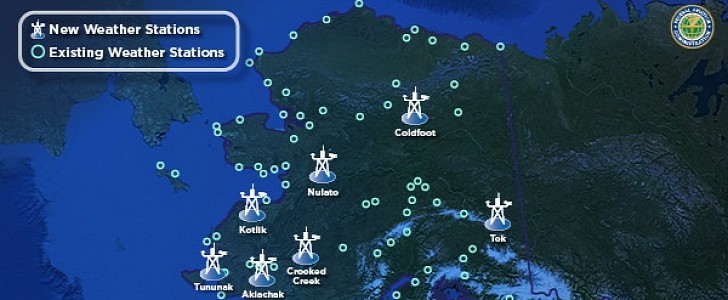Alaska continues to be a challenging territory when it comes to commercial aviation, so the U.S. Department of Transportation’s Federal Aviation Administration (FAA) has decided to take action in order to improve safety and make things a bit easier for the pilots taking off from this area.
Last year, the FAA completed a complex and thorough examination of all safety challenges related to flying in Alaska, which lasted about a year. At the end of that process, it released specific recommendations regarding safety, but this year it will take an even more important step by installing new weather stations across the state, which will provide important information to pilots.
During the yearlong examination, the FAA established that wider and improved access to weather information for pilots is an important safety factor when it comes to flying. “We heard from the Alaska aviation community that they need more real-time weather information to operate safely, and we are delivering on the commitment we made to provide that,” said Steve Dickson, FAA Administrator.
Officially called Automated Weather Observing Systems (AWOS), these new stations will provide accurate weather information in real-time on a continuous basis. Plus, they’ll be operating in some of Alaska’s most remote areas. A total of eight new weather stations will be installed in Akiachak, Coldfoot, Crooked Creek, Kotlik, Nulato, Perryville, Tok Junction, and Tununak.
The FAA explains that weather data from these locations will help pilots get a better view of what to expect upon landing. Together with the National Weather Service, the FAA was already managing more than 130 similar weather systems across Alaska. But it looks like that wasn’t enough in a state where 80% of the local rural and Tribal communities are accessible only by air. Aviation is considered a primary transportation mode in this state, and according to FAA’s report, the weather observation systems were considered insufficient and placed a great distance from each other.
The Administration has already started installing the new ones, with plans for all of them to become operational by October 2022.
During the yearlong examination, the FAA established that wider and improved access to weather information for pilots is an important safety factor when it comes to flying. “We heard from the Alaska aviation community that they need more real-time weather information to operate safely, and we are delivering on the commitment we made to provide that,” said Steve Dickson, FAA Administrator.
Officially called Automated Weather Observing Systems (AWOS), these new stations will provide accurate weather information in real-time on a continuous basis. Plus, they’ll be operating in some of Alaska’s most remote areas. A total of eight new weather stations will be installed in Akiachak, Coldfoot, Crooked Creek, Kotlik, Nulato, Perryville, Tok Junction, and Tununak.
The FAA explains that weather data from these locations will help pilots get a better view of what to expect upon landing. Together with the National Weather Service, the FAA was already managing more than 130 similar weather systems across Alaska. But it looks like that wasn’t enough in a state where 80% of the local rural and Tribal communities are accessible only by air. Aviation is considered a primary transportation mode in this state, and according to FAA’s report, the weather observation systems were considered insufficient and placed a great distance from each other.
The Administration has already started installing the new ones, with plans for all of them to become operational by October 2022.






